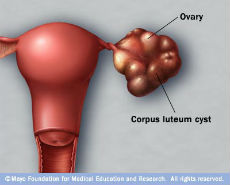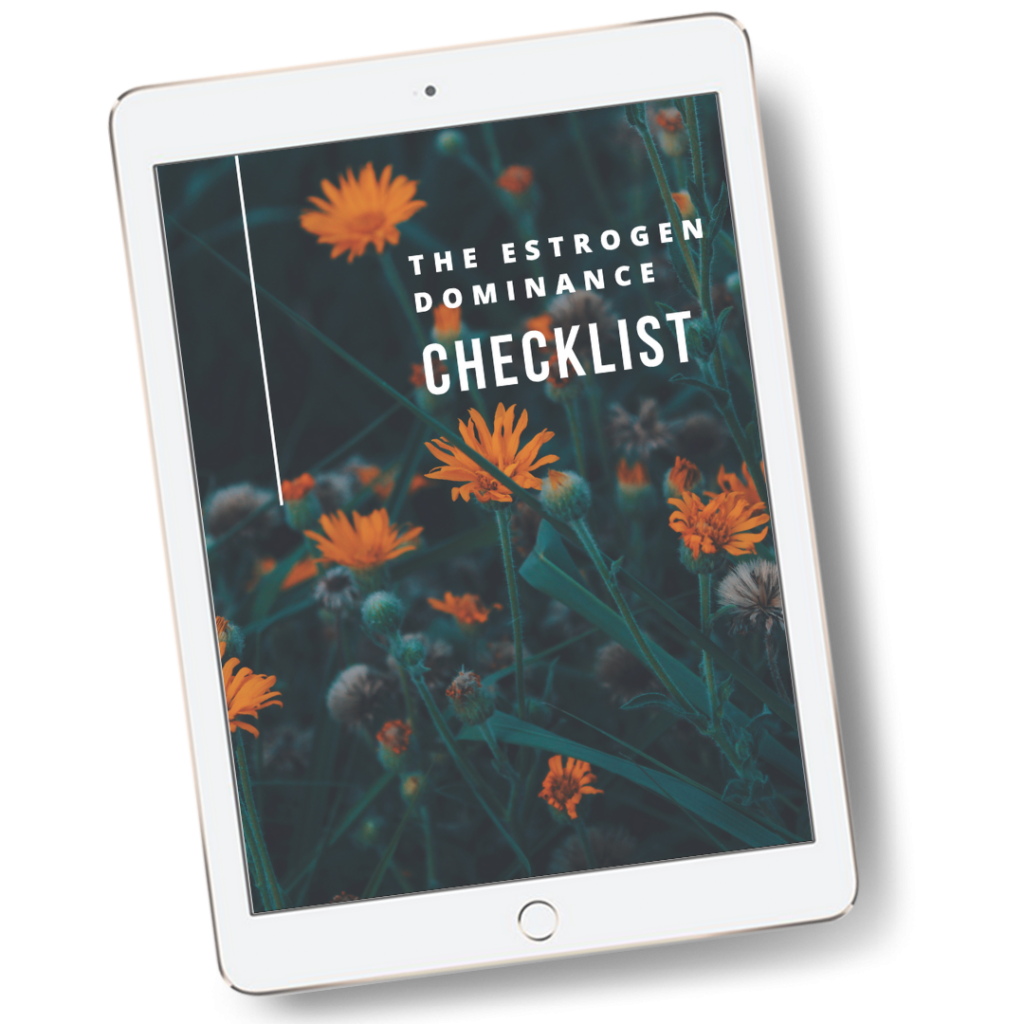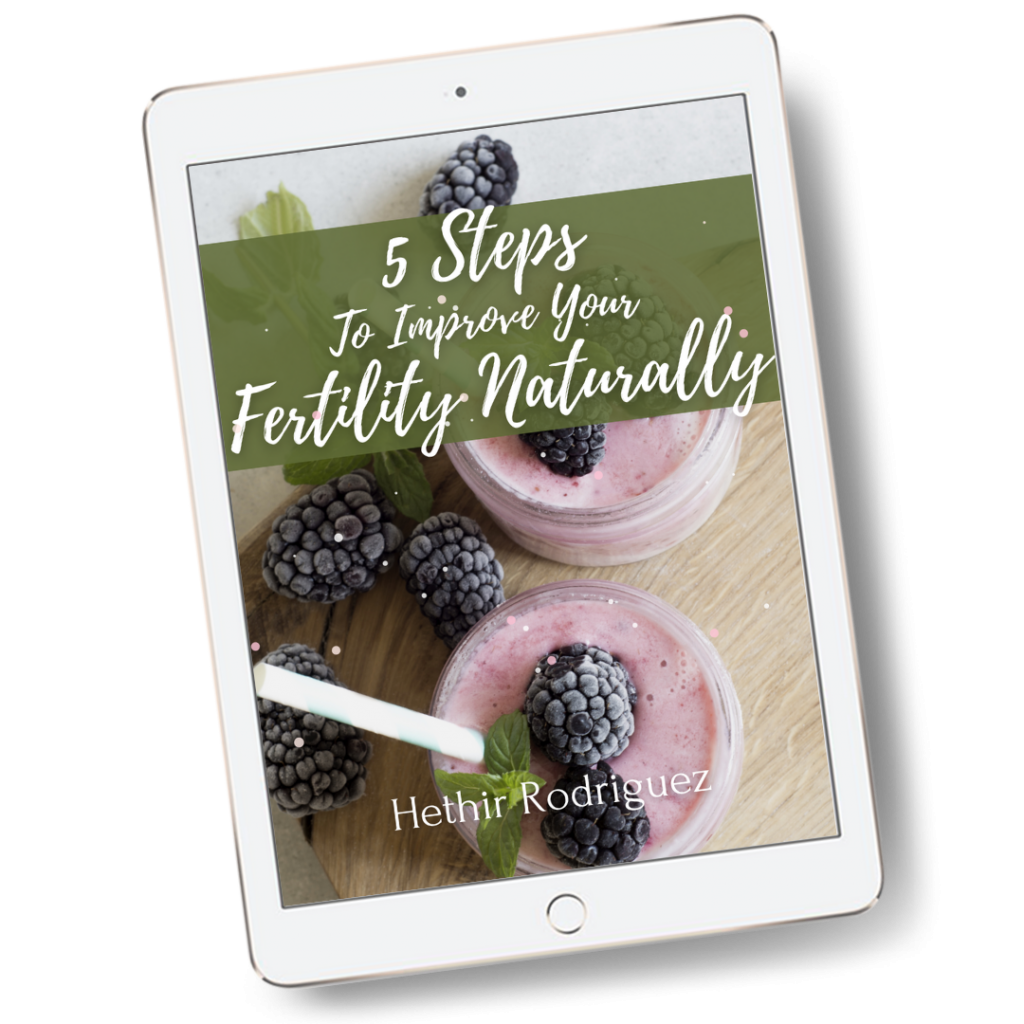Ovarian cysts are fluid-filled growths in a woman’s ovaries. The development of an ovarian cyst/s may happen in just one or both of the ovaries. Usually ovarian cysts are harmless and will go away on their own, but sometimes ovarian cysts can become so large that they rupture, or cause damage to the ovary. In this article we will be discussing the different types of ovarian cysts, what causes them to occur, medical options for ovarian cyst treatment, and natural therapies to support normal ovarian health such as supplements, such as progesterone cream and DIM, and herbs, such as maca, and vitex.
Very large ovarian cysts can cause displacement of the reproductive organs. Damage from a ruptured ovarian cyst may cause scar tissue build-up, and/or the formation of adhesions, attaching the ovary to other parts of the internal body.
Ovarian cysts are most common in women of childbearing years, but can rarely develop in postmenopausal women. A woman’s ovaries are about the size and shape of an almond. It is amazing that something so small and delicate can hold thousands of eggs at birth. It is also quite amazing that something so small can develop a cyst. Thankfully, there are natural remedies that can help the body to rid itself of the cysts naturally, without surgery.
Types of Ovarian Cysts
Functional Ovarian CystsA woman’s ovaries contain thousands of follicles that house immature eggs (ova). During the menstrual cycle each month, as ovulation nears, a select number of follicles are signaled to grow (mature) for ovulation. An ovarian cyst that forms due to a malfunction in follicle maturation is known as a functional cyst. There are two types of functional cysts:
Follicular cyst: This happens when the follicle fails to rupture and release the egg at ovulation; instead it continues to grow, forming a cyst.

Corpus Luteum cyst: After ovulation, once the egg is released, the follicle changes to what is called the corpus luteum. The development of a corpus luteum cyst happens when the opening in the follicle where the egg was released seals off and then causes the corpus luteum to accumulate fluid and grow into a cyst.
Other Types of Ovarian Cysts
There are other types of cysts that form on the ovaries, but they are not related to the menstrual cycle.
Dermoid cyst: These cysts are considered complex and develop from cells that produce human eggs. Because of this, these types of cyst may contain hair, teeth, or skin. They are rarely cancerous.
Cystadenomas: This type of cyst develops from ovarian tissue and is filled with liquid or mucus.
Endometriomas: This type of cyst forms when displaced endometrial cells attach to the ovary and form a growth (endometriosis). This type of ovarian cyst is commonly called a chocolate cyst.
The above 3 types of ovarian cysts may cause damage to the ovary, including twisting, scar tissue and adhesion formation. Both dermoid cysts and cystadenomas may cause the ovary to become very large and displaced. These types of cysts are considered more complex and usually do not respond well to natural therapies. It is best to work with your doctor regarding these types of cysts.
Polycystic ovaries: A polycystic ovary develops many small cysts in a row on the surface of the ovary, which looks like a strand of pearls. Polycystic ovaries are associated with Polycystic Ovarian Syndrome (PCOS). In the case of polycystic ovaries, the ovaries may become enlarged, typically twice the size of normal ovaries. PCOS is fast becoming a leading endocrine disorder among women. Not all women diagnosed with PCOS have ovaries that have these types of cysts.
For more information on PCOS click here…
What Causes Ovarian Cysts?
- Irregular menstrual cycles
- Hormonal imbalance
- Hypothyroidism
- Cigarette smoking
- Early menstruation (11 years or younger)
- BMI above 30
- Infertility treatment with gonadotropins has been found to cause multiple large ovarian cysts in some women
- Use of Clomiphene (Clomid, Serophene) has been shown to increase the risk for development of Corpus Luteum cysts
- Use of Tamoxifen for breast cancer
Signs and Symptoms of Ovarian Cysts
Most women that have ovarian cysts don’t even know they have them; typically, there are no signs or symptoms. Most ovarian cysts are discovered during a routine physical exam. The larger a cyst is, the more likely it is to cause symptoms. Symptoms may be:
- Pelvic pain, usually on the side where the cyst is present. Pain may be sharp, sudden or come and go throughout the cycle
- Irregular menstrual cycles
- Anovulatory cycles may be a sign of a follicular cyst; charting your cycle can help you to determine if you are having anovulatory cycles
- Pelvic pain after intercourse or strenuous exercise
- Nausea and vomiting, this usually happens after a cyst ruptures
- Vaginal pain with spotty mid-cycle bleeding
- Pressure and/or abdominal bloating; may be noticeable on one side or the other
- Pain or pressure in the abdomen when urinating or having a bowel movement
- Infertility
Note: See a doctor immediately if you have excruciating pain, nausea, vomiting and/or bleeding from the vagina during any point in your cycle.
How are Ovarian Cysts Diagnosed?
If you suspect you have an ovarian cyst, your doctor can help direct you to the best type of diagnostic testing for your needs. Here are some tests your doctor may perform:
- Transvaginal ultrasound is a vaginal ultrasound probe inserted into the vagina. This type of ultrasound has been found to produce a better image of ovarian cysts than external ultrasound through the abdominal wall.
- Laparoscopic surgery may be performed to determine the type of cyst and to take a biopsy.
- CT or MRI may be used if there is further concern.
- Serum CA-125 assay is a blood test to determine if the cyst is cancerous. This test is not always accurate because elevated levels of CA-125 may also signal the presence of uterine fibroids, adenomyosis or endometriosis.
Medical Options for Ovarian Cyst Treatment
The number one medical treatment for functional ovarian cysts is to prescribe birth control pills. This prevents ovulation; therefore the formation of functional ovarian cysts cannot happen. Use of the birth control pill presents a problem though; one, it prevents pregnancy, and two, it may cause long-term hormonal imbalance, and three, it does not solve the root of the problem.
In the Cochrane Database Syst Rev., a 2011 review of eight randomized controlled trials from four countries, 686 women, aiming to determine the effectiveness of oral contraceptives on functional ovarian cysts, conclude that “Treatment with combined oral contraceptives did not hasten resolution of functional ovarian cysts in any trial. This held true for cysts that occurred spontaneously as well as those that developed after ovulation induction. Most cysts resolved without treatment within a few cycles; persistent cysts tended to be pathological (e.g., endometrioma or para-ovarian cyst) and not physiological.”
If an ovarian cyst becomes too large, is considered to be at a higher risk for rupture, is a complex cyst, has twisted or has become attached to other parts of the internal body, a doctor may choose to remove it surgically. Your doctor will be able to help you to determine your best options.
How Natural Therapies May Help with Ovarian Cysts
There are natural options that are very effective for managing functional ovarian cysts. We like to approach it at two different levels – clearing out and prevention. In this guide you will learn how to clear out excess estrogens and cysts while working to prevent future ones from being created. This therapy usually has results in 3 months, but should only be done prior to trying to conceive.
The Benefits of Natural Therapies for Ovarian Cysts:
- Reduces excess estrogens
- Promotes hormonal balance
- Reduces cyst size and growth
- Least invasive
- Very effective
- No side effects
How to Help Ovarian Cysts Naturally…
Step One: Reduce Estrogen
Excess estrogen is one of the most common types of hormonal imbalance, which can cause the disruption of ovulation. One of the best ways to rid the body of excess estrogens is to stop exposing yourself to xenohormones and to start taking a supplement called DIM (diindolylmethane).
Avoid exposure to estrogens and xenoestrogens
- Stop eating soy foods
- Eat only organic meats and dairy
- Do not microwave foods in plastic
- Stop drinking water from plastic bottles
- Avoid mineral oil and parabens in skin care products
- Use natural detergents
Supplement with DIM
DIM helps to clear the body of these excess estrogens, aiding in hormonal balance and reducing the promotion of ovarian cyst growth. DIM should be taken daily for at least three months along with lifestyle changes which include avoiding xenoestrogens found in products, foods and the environment.

Get The Estrogen Dominance Checklist
- Tips and recommendation to supporting your body’s ability to get rid of excess hormones
- How to avoid chemicals that mimic hormones and where to find them
- Expert advice to support hormonal health
Step Two: Increase Progesterone and Balance Hormones
Natural Progesterone
When there is excess estrogen in the body, there is usually also a progesterone deficiency. Balancing your estrogen and progesterone levels by using natural progesterone cream will help reduce the ovarian cysts and lessen the chance of them occurring in the future. Use of natural progesterone cream helps to increase progesterone levels.
Dr. John Lee believed natural progesterone to be one of the best treatments for ovarian cysts. One of the ways he used natural progesterone to eliminate ovarian cysts was by having his patients apply natural progesterone from days 10-26 of the cycle. This “tricks” the body into thinking it is pregnant which suppresses ovulation. If ovulation doesn’t occur, functional ovarian cysts cannot form.
Note: This is a short-term treatment that is best done in conjunction with the other supportive supplements. The above natural progesterone protocol is intended to help the body eliminate the ovarian cysts and prevent the formation of new ones, so that in a few months you can begin trying to conceive. Remember, should you choose to follow Dr. Lee’s natural progesterone protocol for ovarian cysts you may not ovulate during that time, which means you may not be able to get pregnant. If you would like to learn more about how Dr. John Lee treats ovarian cysts with natural progesterone cream, please consider purchasing his book on natural progesterone at his website.
Supportive Herbs for Ovarian Cysts
Now that “clearing out” is covered, let’s look at balancing the body so we can help prevent future cysts. Consider an herbal program for preventing ovarian cysts from forming in the first place.
We like to use herbs to help to nourish the endocrine system, and promote hormonal balance, regular ovulation, and proper circulation to the reproductive organs. We also like to use herbs that are detoxifying to the liver for improved hormonal balance and estrogen metabolism. Ovarian cysts are considered a state of stagnation in the body, both in regard to the liver and circulation to the reproductive organs.
Maca root(Lepidium meyenii) Maca is a great fertility herb that helps the body produce progesterone and balance the hormones without containing any hormones itself.
We find that maca helps natural progesterone to work better by nourishing the endocrine system. Maca is best taken daily at 1,000-3,000 mg.
Black Cohosh root (Actaea racemosa): This herb promotes regulation of the entire menstrual cycle. Black cohosh is one of the best herbs for relieving ovarian pain.
Dong Quai root (Angelica sinensis): This traditional Chinese herb aids hormonal balance and is specific for congestive fertility issues. Dong Quai also supports healthy circulation to the reproductive organs and reduction in pain associated with a variety of fertility issues.
Milk Thistle seed (Silybum marianum): This herb supports hormonal balance through liver support. Milk thistle helps the liver to cleanse and regenerate itself. As we all know, the liver helps to filter toxins from the body, including excess hormones.
Tribulus, aerial parts and fruit (Tribulus terrestris): Tribulus has been found to normalize ovulation when used prior to ovulation. In her text Botanical Medicine for Women’s Health, physician, midwife, and herbalist Dr. Aviva Romm shares of one study performed on 36 women who were not ovulating, showing that 67% realized normal ovulation after only 2-3 months of consistent use. The women were given 300-400mg a day, from day 5-14 of their menstrual cycle. 6% became pregnant right away. Tribulus has also been found to be a nourishing tonic for the female reproductive system as a whole, especially concerning the ovaries.
Vitex, Chaste tree berry (Vitex agnus-castus): Vitex aids in regulating hormonal balance, promotes ovulation, and improves timing of the entire menstrual cycle.
Wild Yam root (Dioscorea villosa): Wild Yam promotes a healthy menstrual cycle and hormonal balance. Wild Yam is also an excellent remedy for reducing ovarian pain.
Yarrow aerial parts (Achillea millefolium): Yarrow relieves pelvic congestion through improved circulation to the reproductive organs.
Step Three: Dissolve and Reduce Cysts
There are two natural therapies that have been used time and time again to help the body break down the cysts, reduce their size and may help them to disappear altogether.
Systemic Enzyme Therapy: The body contains a variety of enzymes. Enzymes are catalysts for chemical reactions necessary to the innumerable actions that maintain the function of the body. A subclass of enzymes known as Systemic Enzymes work to help the body breakdown excess foreign tissues and reduce inflammation. Supplementation with a high-quality systemic enzyme blend such as Fertilica Choice EnzymesTM may help the body to reduce the size of the cysts or eliminate them over time.
Castor Oil Pack: Castor Oil Packs are an ancient therapy that help to cleanse and heal the area of the body where they are placed. The castor oil has a drawing power that helps the body to clear itself of excess tissues and toxins. Castor oil packs stimulate the lymphatic and circulatory systems. The lymphatic system removes toxins and waste from the area where the pack is applied. A castor oil pack also increases circulation which helps to bring in fresh oxygenated, nutrient-rich blood to the reproductive organs, including the ovaries. This is a vital step to helping the body reduce and dissolve ovarian cysts. Do not apply during menstruation.
Click here to purchase a kit that contains these products…
Summary
We have learned the main cause of functional cysts is hormonal imbalance, which disrupts the natural menstrual cycle and may lead to the formation of ovarian cysts. It is vital to bring the body back to a state of balance to prevent the formation of ovarian cysts.
1. Reduce excess estrogen in the body by avoiding exposure to xenoestrogens and naturally promoting healthy estrogen metabolism through the use of DIM.
2. Increase progesterone levels and support hormonal balance overall. Consider the benefits of natural progesterone supplementation and herbs for hormonal balance and the reduction in cyst formation.
3. Dissolve and reduce ovarian cysts through Systemic Enzyme Therapy and Castor Oil Packs.
Ovarian Cyst Natural Therapies Checklist
Daily:
1. DIM – 1 capsule, 1 to 4 times a day with food
2. Maca – 2 capsules a day
3. Systemic Enzyme Therapy – 3 tablets 2 times a day on an empty stomach at least 45 minutes before meals with water.
Day 10 -26 of your menstrual cycle:
Apply 40mg Progesterone cream a day: 20mg twice a day, one 20mg application in the morning and one 20mg application at night, for a total of 40mg of natural progesterone a day. This method of progesterone therapy may be best done for three months and then discontinued after that. This type of application is meant to suppress ovulation, so do not use progesterone in this way when you are trying to become pregnant.
6 times a month for 3 months:
Castor oil pack – Use the castor oil pack 30 minutes a day for at least 6 days of the month any time after menstruation. Apply for a total of 3 months.
Note: It is best to take 3 months to work to get rid of ovarian cysts prior to trying to conceive. Should you actively try to conceive while using Castor Oil Packs, apply them prior to ovulation only.
Too learn more about related subjects covered in this article, please visit the following links:
How to Quit Smoking to Protect Your Fertility
Study Shows Increased Infertility Risk for a BMI Over 30
Menstrual Calendar, Charting Your Signs of Fertility: Part 1
Blood Clots During Your Period – Should You Be Concerned?
Fertility: One More Reason To NOT Eat SOY
How Important is Going Organic to My Fertility?
Are Everyday Plastics Causing Infertility?
Black Cohosh Benefits the Menstrual Cycle, Pain and Uterine Health
Milk Thistle Seed Important For Hormonal Balance
Wild Yam: Herb for Reproductive System Support in Women
Yarrow: Ancient Fertility Herb in Your Backyard
How to Use Fertility Herbs To Enhance Your Fertility Naturally
Infertility Due to Being Underweight
- Auborn, Karen J., Saijun, Fan, Rosen, Eliot M., Goodwin Leslie, Chandrasekaran, Alamelu, Williams,David E., Dazhi, Chen, Carter, Timothy H. (2003). Indole3carbinol is a negative regulator of estrogen. The Journal of Nutrition; vol. 133, no 7, SUP (109 p.) (27 ref.), pp. 2470S2475S Retrieved from: https://academic.oup.com/jn/article/133/7/2470S/4688465
- Zeligs, Michael A. (1998). Diet and Estrogen Status: The Cruciferous Connection. Journal of Medicinal Food; 1(2): 6782 Retrieved from: https://www.liebertpub.com/doi/pdf/10.1089/jmf.1998.1.67
- McDougal, Andrew. (3/ 2001). Methyl substituted diindolylmethanes as inhibitors of estrogeninducedgrowth of T47D cells and mammary tumors in rats. Breast Cancer Research and Treatment; Volume 66,Number 2. Retrieved from: https://link.springer.com/article/10.1023%2FA%3A1010608000074
- Eleutério Junior, J., Cavalcante, D. I. M., Ferreira, F. V. D. A., & Medeiros, F. D. C. (2001). Estrogen and progesterone receptors in peritoneal fluid cell sediment in pelvic endometriosis: immunocytochemical study. Revista Brasileira de Ginecologia e Obstetrícia, 23(2), 8386. Retrieved from: http://www.scielo.br/scielo.php?script=sci_arttext&pid=S0100-72032001000200004
- Grimes DA1, Jones LB, Lopez LM, Schulz KF. (2011 Sept 7).Oral contraceptives for functional ovarian cysts. Cochrane Database Syst Rev. (9):CD006134. doi: 10.1002/14651858.CD006134.pub4. Retrieved from https://www.ncbi.nlm.nih.gov/pubmed/21901701
- Nouza K., Madar J. VIII. (2001). Immunomodulation in the treatment of reproduction disturbances. American Journal of Reproductive Immunology; Vol. 46, No. 1, pp. 106, Abst. WP83 Retrieved from: https://www.researchgate.net/publication/281972662_Immunomodulation_in_the_treatment_of_reproduction_disturbances
- F.W. Dittmar, W. Luh. (1993). Treatment of fibrocystic mastopathy with hydrolytic enzymes. International J. of Experimental and Clinical Chemotherapie; Vol. 6, No. 1, pp. 920 Retrieved from: http://www.enzymescience.com/OBGYN%20and%20Pregnancy/FibrocysticMastopathy.htm
- Patki, V, M.D. How Systemic Enzymes Fight Inflammation. Retrieved from: http://www.systemicenzymetherapy.com/Inflammation/CourseofAction.htm
- OstrowskiMeissner H., Kapczynski W., Mscisz A. et al. (2003). An Attempt to Use Maca (Lepidiumperuvianum) in Post Menopausal Women. Advances in Phytotherapy; IV: 19. Retrieved from: https://www.ncbi.nlm.nih.gov/pmc/articles/PMC3614576/
- Muller V. (1997). Maca in Hormone Replacement Therapy. Whole World Botanicals Report; 17
- Muller V. (2002). South American Herb Maca as Alternative to Hormone Replacement Therapy. Whole World Botanicals Report. Retrieved from: http://kokming.com/smsmaca/MacaasAlternativetoHormoneReplacementTherapy.htm
- Walker M. (1998) Effect of Peruvian Maca on Hormonal Functions. Townsend Letter for Doctors and Patients; 11: 18.
- Lee, John, M.D. (2006). Hormone Balance Made Simple. New York, New York: Grand Central Life & Style Hachette Book Group.
- Lee, John, M.D. (1999). What Your Doctor May Not Tell You About Premenopause. New York, New York: Grand Central Life & Style- Hachette Book Group.
- Romm, Aviva. (2010). Botanical Medicine for Women’s Health. St. Louis, Missouri: Churchill Livingstone/Elsevier; pp. 347-353.
- eMedicine Health online:http://www.emedicinehealth.com/ovarian_cysts/page1_em.htm#ovarian_cysts_causes
- PubMed Health. Ovarian Cysts. Retrieved from:http://www.ncbi.nlm.nih.gov/pubmedhealth/PMH0002473/
- Alternative Surgery. Ovarian Cysts. Retrieved from: http://www.alternativesurgery.com/education/ovarian-cysts/
- Northrup, Christiane, M.D. (2010). Women’s Bodies Women’s Wisdom. New York: Bantam Books
- Chichoke, A., M.A., D.C. (2000). Enzymes & Enzyme Therapy how to jumpstart your way to lifelong good health. Second Edition. Chicago: Illinois. Keats Publishing. pp 199-200





